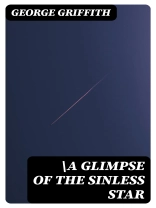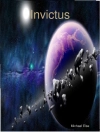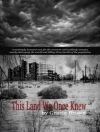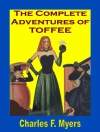In ‘A Glimpse of the Sinless Star, ‘ George Griffith weaves a compelling narrative that blends elements of science fiction with philosophical inquiry. Set against the backdrop of a utopian future, Griffith presents a society where moral and ethical dilemmas are explored through the lens of advanced technology and extraterrestrial encounters. The author’s meticulous attention to detail and imaginative prose invites readers to ponder the implications of a sinless existence and the potential for human evolution beyond earthly confines, positioning the work within the broader context of late 19th-century speculative literature, an era often marked by fervent debates on morality and technological progress. George Griffith, an influential voice in early science fiction, was renowned for his pioneering ideas that challenged societal norms and inspired future generations. His experiences as a journalist and his keen interest in evolution and the cosmos profoundly shaped his worldview, fueling his desire to explore the intersections of science, ethics, and human aspiration. This background not only informed the development of his compelling characters but also provided a rich philosophical framework for the thematic elements presented in the novel. I wholeheartedly recommend ‘A Glimpse of the Sinless Star’ to readers seeking a thought-provoking exploration of human potential and ethical boundaries. Griffith’s unique blend of philosophical depth and imaginative storytelling offers not only an entertaining read but also a significant reflection on the future of humanity, making it essential for any enthusiast of science fiction and moral philosophy.
关于作者
George Griffith, born George Chetwynd Griffith-Jones (1857–1906), was an English explorer, journalist, and prolific science fiction writer, known for his audacious and fantastical tales that captivated the Victorian public. He gained prominence with his publication ‘A Glimpse of the Sinless Star’ (1893), a novel that showcased his flair for creating narratives which were as philosophically provocative as they were entertaining. Griffith’s literary style was a blend of scientific exposition, romantic adventure, and a prophetic vision of technological innovation. As an author, he demonstrated a fearless engagement with taboo subjects for his time, such as degeneration and societal collapse. Not constricted to earthly boundaries, his works often catapulted readers into outer space and alternative dimensions, marrying escapist literature with poignant social commentary. Griffith’s contemporaries include H.G. Wells and Jules Verne, with whom he shared a penchant for exploring the potential consequences of scientific advancement. The hallmark of Griffith’s writing lies in his ability to craft a story that, beyond its surface excitement, urges the reader to ponder the ethical implications of human progress.












